My Best Advice On How To Diagnose Dyslexia In A Child
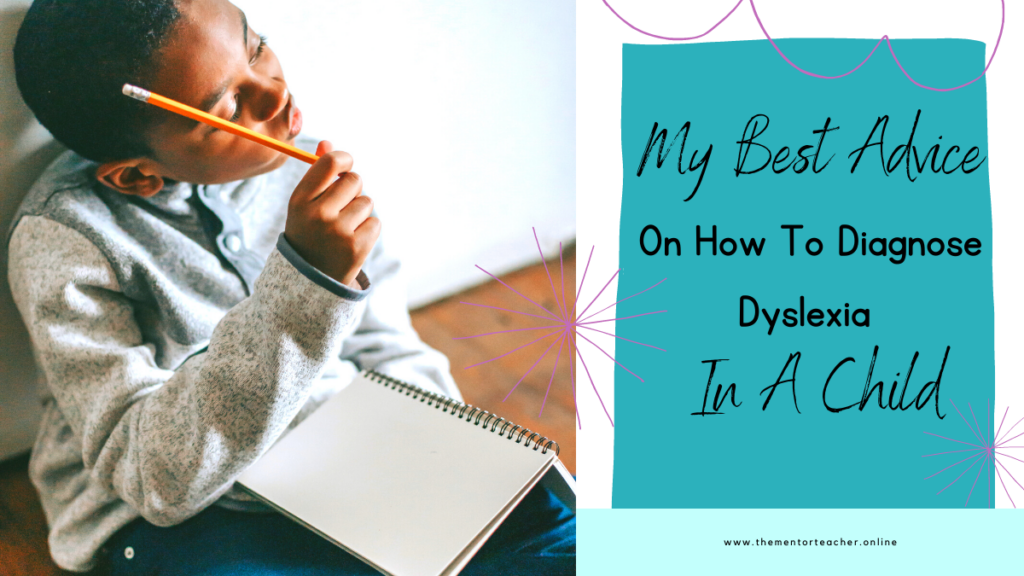
How To Diagnose Dyslexia In A Child, Why Do I Need To Know?
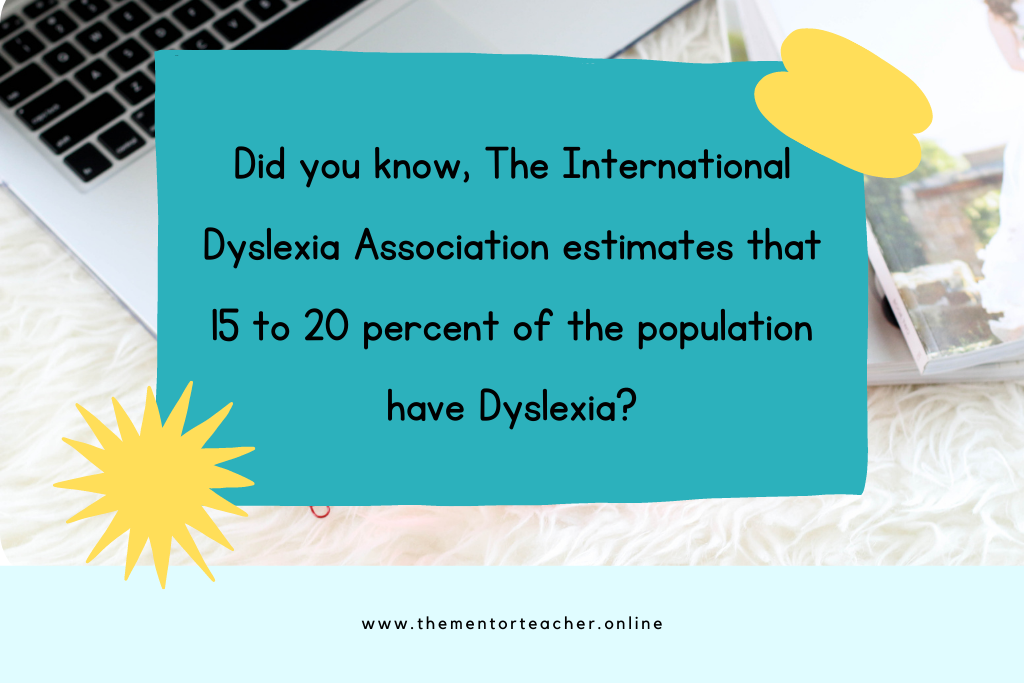
Would you know how to diagnose Dyslexia in a child in your classroom? Did you know The International Dyslexia Association estimates that 15 to 20 percent of the population have Dyslexia? As a beginning teacher, I know for sure that I didn’t know how common Dyslexia was, or even really what it meant for those students who were affected by it. I also had no idea how to diagnose Dyslexia in a child. Since Dyslexia is so common it’s really important that as teachers we learn how to spot dyslexia in the classroom.
Want to test out my phonics resources? Click here to download my free J phonics activities.
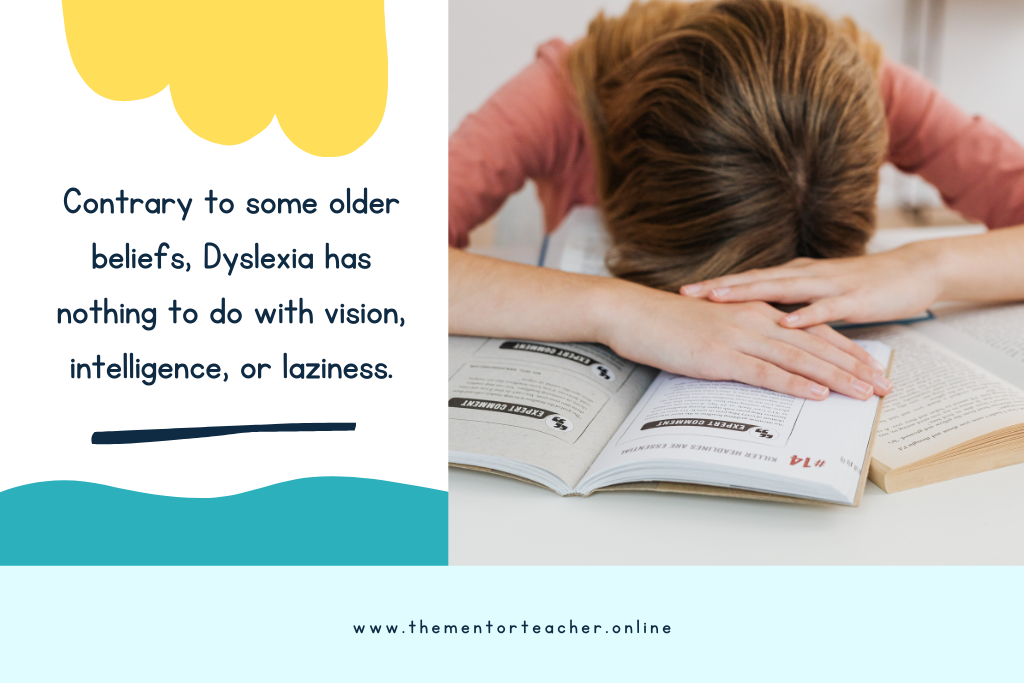
My Story
When I first started teaching, I was offered a job in a special needs school. I taught students in grades 1 to 7 social studies as a DOTT provider. (In Australia teachers have allocated time called DOTT which stands for duties other than teaching). These students all qualified to be in a special needs school as they had diagnosed learning difficulties. After a couple of years working in Special Needs Education I went to work in a Mainstream school. The classes I taught all had varying degrees of ability and students who had undiagnosed learning difficulties. And I can tell you I thought I knew everything about teaching students with special needs. (Read more about my teaching history here.)
But I was wrong. I didn’t know anything much about identifying students who had an undiagnosed learning disability.
One particular student who did have a diagnosis of ADHD didn’t make as much progress in spelling as I would have liked. This student attended Literacy Intervention classes, was really strong in maths and science, and was generally very capable. So I thought they were all okay! Especially since they were attending Literacy Intervention classes, and had a diagnosis, they were on an Individual Education Plan (IEP). To me, all bases were covered.
The next year, I was shocked when the student was diagnosed with Dyslexia. I felt so guilty that I didn’t pick it up. I thought I had failed this student. But I didn’t know what to look out for and I didn’t fully understand how students can have more than one diagnosis.
So to make sure this didn’t happen again, I spoke to our literacy coach who taught intervention about how to diagnose Dyslexia in a child. She gave me some tips about what to look for and what to do about it so that no student in my class flew under the radar again.
How To Identify Dyslexia In A Child
So do you want to know how to spot Dyslexia in your classroom? I definitely don’t want you to make the same mistake I did. Maybe you are a beginning teacher and you don’t know what to look out for? Perhaps you have a student that isn’t really making the progress in literacy that you think they should be able to? Do you have reluctant readers in your class? Or students who just can’t seem to follow instructions? If the answer to any of these questions is yes, then keep reading.
What Is Dyslexia
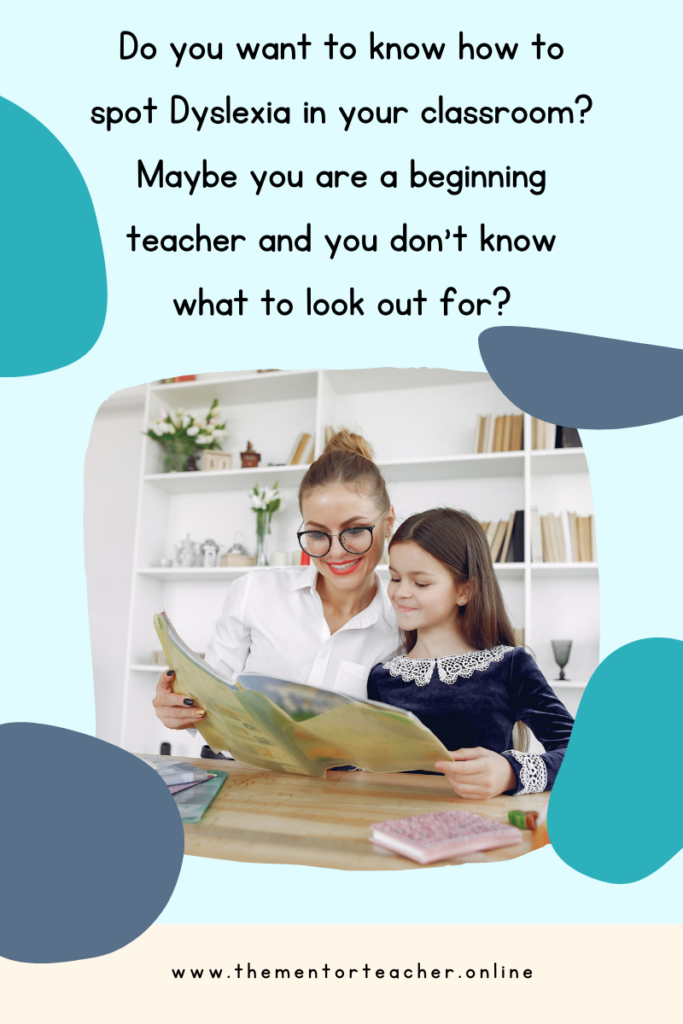
Dyslexia is a language-based learning difficulty that can present in different ways. Like some other learning difficulties, it is a spectrum, meaning students can have mild to severe forms of Dyslexia. Contrary to some older beliefs Dyslexia has nothing to do with vision, intelligence, or laziness. It is not merely reading backwards, or letters moving on the page.
Dyslexia is a lifelong learning difficulty with no cure. Quality teaching methods can definitely improve the ability of students with Dyslexia to learn to read, spell and write.
How To Spot Dyslexia
Here is a list of some things to watch out for.
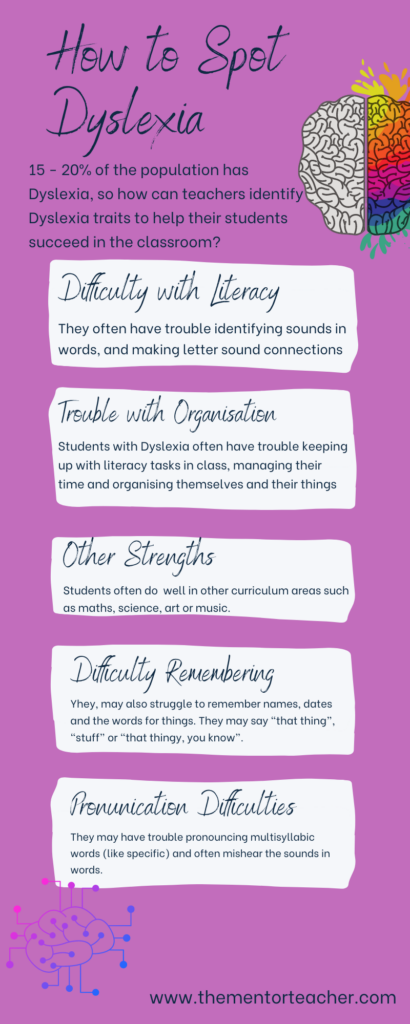
Students Have Difficulty With Literacy Tasks
Children who have Dyslexia sometimes had delayed speech in early childhood. They often have trouble identifying sounds in words, and making letter sound connections. They have difficulty blending and segmenting when learning to read and spell.
Students Make Many Spelling Errors
Students might make different spelling errors for the same word in one piece of writing. They may spell a word one way on one day and another on the next. For example – wich, whic, witk for which. Often students don’t spell all the sounds in a word even if it is wrong. For example, a student may spell the word butterfly as buterfli which is wrong but still contains all the sounds you can hear in the word butterfly. A student with Dyslexia may spell the word butfli, which is missing the er sound.
Students Struggle To Learn To Read and Write
They struggle to identify words that rhyme such as fat and cat. They make random reading errors, especially for simple, frequent words, and guess words often. Some students with Dyslexia also flip letter shapes, reverse letter combinations and write in all caps. Many children with dyslexia have trouble with English letters that contain the same shapes, for example, a lowercase b is a flipped version of a lowercase d. While it’s common for kids who are learning how to write to flip letters, when this behavior continues into the second and third grades, dyslexia may be to blame.
Lastly, they are often understandably reluctant to read aloud in front of others.
Trouble With Time Keeping And Organisation
Students with Dyslexia often have trouble keeping up with literacy tasks in class, managing their time and organising themselves and their things.
Reading And Writing Skills Don’t Match Other Abilities
Students often do really well in other curriculum areas such as maths, science, art or music but may be well below grade level in literacy areas. They often have good verbal communication and understanding but have difficulty transferring this into reading and writing lessons.
Difficulty Remembering And Following Instructions.
Students with Dyslexia sometimes have difficulty rote learning things such as days of the week or the alphabet for example. This is because they may have working memory issues. They may also struggle to remember names, dates, and the words for things. They may say “that thing”, “stuff” or “that thingy, you know”. As well as having difficulty remembering they may also have trouble following instructions especially when they are verbal.
Pronunciation difficulties
They may have trouble pronouncing multisyllabic words (like specific) and often mishear the sounds in words.
Who Can Diagnose Dyslexia
While teachers are not able to formally diagnose Dyslexia, we are usually the first people to notice that there is something not quite right with a student’s progress. It is so important to spot these students who might have Dyslexia early, so we can help their parents get a diagnosis and so we can provide quality teaching that will help them to succeed.
Remember a diagnosis of Dyslexia doesn’t mean a student can’t learn to read or write, they just need some extra help and practise. They can still be lovers of reading and very successful adults
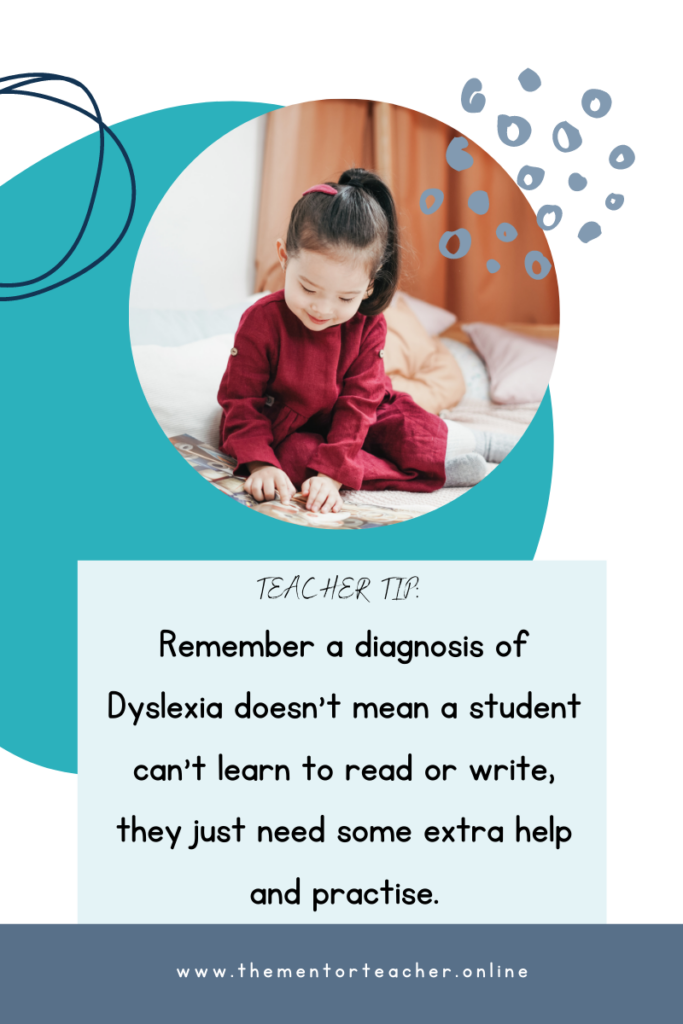
.
I Think My Student Has Dyslexia, Now What?
- Your first step should be to collect evidence. You need to collect writing samples, reading records, spelling tests, and any other data to provide a full picture of the student’s abilities.
- Talk to your Deputy Principal, Principal, or School Psychologist about the next steps. Now that you have all your information you can discuss your concerns with your upline manager about what to do next. I know my school has a process outlined that we need to follow. This includes collecting evidence and completing a referral to the school psychologist.
- Identify what learning accommodations you can make in your classroom to help the student be a successful learner. It’s a good idea to consider putting them on an Individual Education Plan (to read more about how to write an Individual Education Plan click here) to make sure that their needs are being met.
- Chat to the students’ parents and let them know about your concerns. Try to find out if there is any family history of Dyslexia or other language learning difficulties in the family. Dyslexia is often hereditary and you may find a parent or sibling also has the learning difficulty.
- Each term review the student’s progress, rewrite their Individual Education Plan, and meet with the parents to discuss their progress. Remember to celebrate their success!
Related Articles
For more information you can go to:
DSF: Dyslexia SPELD Foundation Literacy and Clinical Services
Australian Dyslexia Assocation
The Dyslexia Resource: Training Tutoring and Education
The International Dyslexia Association
Want to test out my phonics resources? Click here to download my free J phonics activities.
I hope this blog post has helped you feel more confident about how to diagnose dyslexia in a child.

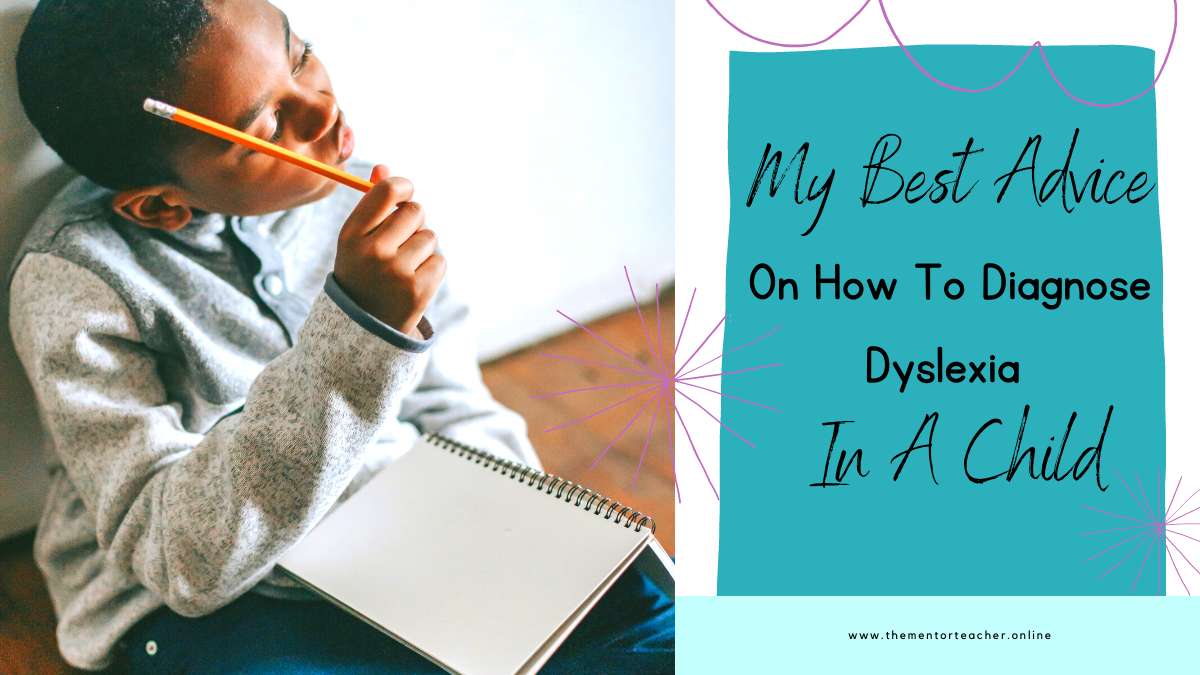
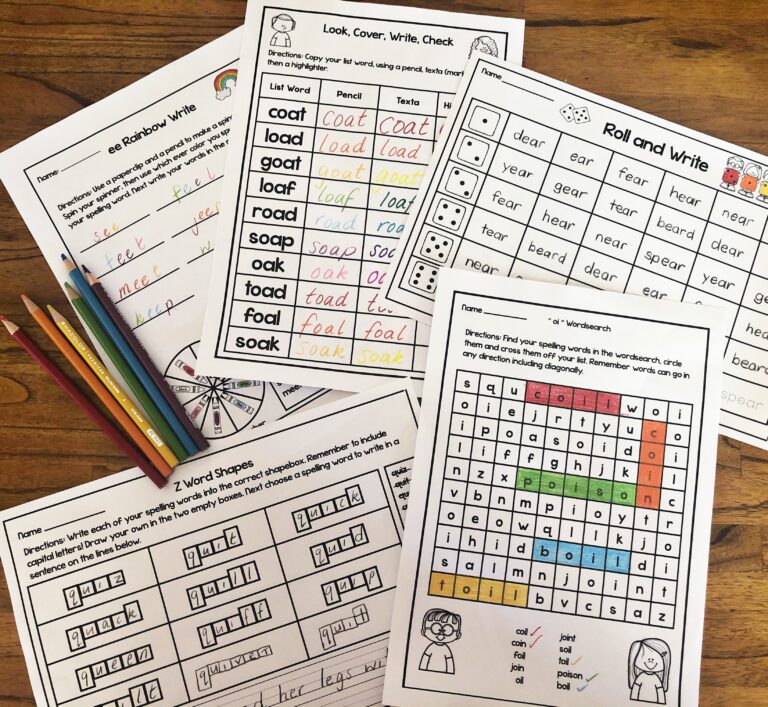

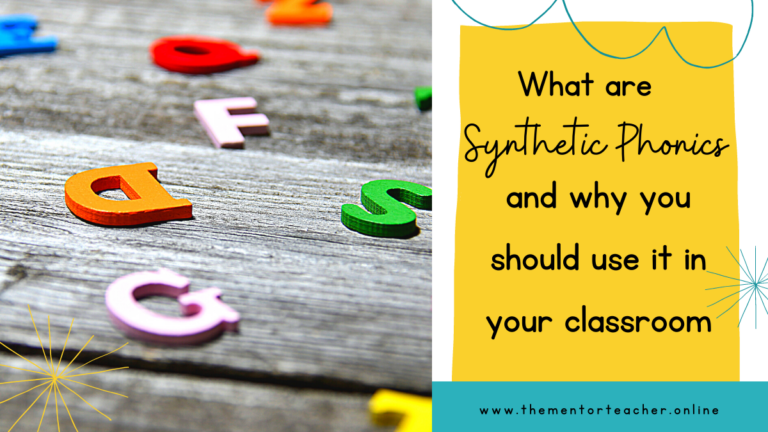
One Comment
Comments are closed.